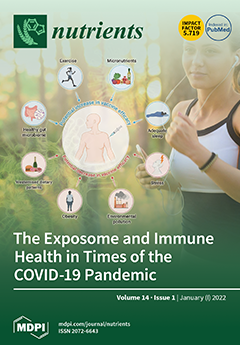Saffron (
Crocus sativus L.) is known as the most expensive spice.
C. sativus dried red stigmas, called threads, are used for culinary, cosmetic, and medicinal purposes. The rest of the flower is often discarded, but is now being used in teas, as
[...] Read more.
Saffron (
Crocus sativus L.) is known as the most expensive spice.
C. sativus dried red stigmas, called threads, are used for culinary, cosmetic, and medicinal purposes. The rest of the flower is often discarded, but is now being used in teas, as coloring agents, and fodder. Previous studies have attributed antioxidant, anti-inflammatory, hepatoprotective, neuroprotective, anti-depressant, and anticancer properties to
C. sativus floral bio-residues. The aim of this study is to assess
C. sativus flower water extract (CFWE) for its effects on hemoglobin, brush boarder membrane (BBM) functionality, morphology, intestinal gene expression, and cecal microbiome in vivo (
Gallus gallus), a clinically validated model. For this,
Gallus gallus eggs were divided into six treatment groups (non-injected, 18 Ω H
2O, 1% CFWE, 2% CFWE, 5% CFWE, and 10% CFWE) with
n~10 for each group. On day 17 of incubation, 1 mL of the extracts/control were administered in the amnion of the eggs. The amniotic fluid along with the administered extracts are orally consumed by the developing embryo over the course of the next few days. On day 21, the hatchlings were euthanized, the blood, duodenum, and cecum were harvested for assessment. The results showed a significant dose-dependent decrease in hemoglobin concentration, villus surface area, goblet cell number, and diameter. Furthermore, we observed a significant increase in Paneth cell number and Mucin 2 (MUC2) gene expression proportional to the increase in CFWE concentration. Additionally, the cecum microbiome analysis revealed
C. sativus flower water extract altered the bacterial populations. There was a significant dose-dependent reduction in
Lactobacillus and
Clostridium sp., suggesting an antibacterial effect of the extract on the gut in the given model. These results suggest that the dietary consumption of
C. sativus flower may have negative effects on BBM functionality, morphology, mineral absorption, microbial populations, and iron status.
Full article






